As a professional year-round ski instructor with over 30 years of experience I have specialized heavily on training recreational skiers that love to work on their skiing and value good coaching. Obviously the marketing messages from CARV are especially appealing to my clients and I have received countless questions in the past about CARV’s digital coaching system. I have therefore decided to take the time before the start of this ski season to test the device and write an honest revciew on CARV where I answer the questions:
- Carv 1 – How I Discovered CARV and Why I Did Not Recommend It to My Clients
- Carv 2 – What’s new and why taking away 68 sensors will lead to better results
- Using Carv 2 as a Coach – Will It Help You Ski Better?
- Is it worth the Hype and Should You Buy It?
Disclaimer: I am not sponsored by CARV in any way. A few years ago, I spent two days on snow with CARV managers, as they wanted my input, but I have purchased both Carv 1 and Carv 2 myself, and everything stated below is my personal opinion.
We will first have a look at Carv 1 to give a clearer understanding of how Carv works, including the distinction between actual data readings and processed scores. Next, we’ll explore what’s new with Carv 2 and why I think that taking away 68 of the 72 sensors is a step in the right direction. I will then share some thoughts on how well I believe Carv 2 can perform as a coaching tool and whether the virtual coach is truly a game changer. Finally, I’ll conclude with my recommendation on whether you should consider purchasing Carv 2 or not.
Carv 1 – How I Discovered CARV and Why I Did Not Recommend It to My Clients
In 2016, I discovered CARV and was the 37th person to back it on Kickstarter. It immediately caught my attention, as I am always interested in technology that can help make my lessons more efficient.
After receiving Carv 1 I did a lot of testing and a few months later also spent two days on snow with one of the founders and one of the managers to share ideas. One of the areas that they wanted to talk to me about was my experience with the UClear Helmet Intercoms, which I had been using in my lessons for many years. Looking up sources for this article I just found the paragraph below from a blog on the CARV page:
“How real-time coaching was born – The idea for real-time audio feedback came about when Jamie skied with Austrian Ski Instructor Klaus Mair. Klaus has pioneered a type of radio coaching where he follows you as you ski and gives you real-time tips and feedback via radio. That way you can respond to feedback and adapt your technique on the fly, rather than waiting until you both stop on the side of the run or on the chairlift. That run stuck with Jamie, and he knew he wanted to develop digital coaching with a similar real-time element.“ (CARV Blog) https://getcarv.com/blog/developing-active-coaching
I enjoyed exchanging ideas with them and it was clear that there were some brilliant people involved in developing this product that had an honest interest in helping skiers and in building a successful business.
Overall, using Carv was very exciting from the start. As a ski coach, I constantly show and explain what is going on in people’s skiing and what we need to work on so they can reach their goals. We use a lot of video in our lessons, which we study together during and after the training. The thought to have some objective data to go with that was very exciting.
But my excitement faded fairly quickly as I had to realize that the things that Carv measured did not align with what I felt or saw. The discrepancies were most noticeable when it came to outside ski pressure and fore aft balance. It became clear early on, that the data collected from the pressure sensors in the footbeds did not correlate with the position fore-aft nor laterally. As nice as the illustrations of foot pressure were to look at on the app, they had little relevance for where the skiers’s weight actually was over the skis. Why is that?
https://getcarv.com/blog/what-carv-can-measure
The main flaw with the pressure sensors was that they overlooked all the pressure applied to the ski through parts of the boot other than the sole. If we would be standing on a surfboard or a skateboard then measuring the foot pressure would give us a complete picture. But in skiing we are connected to the skis through our boots and pressure is transferred through the entire boot and not just the sole. Ron Le Master called the boot the handle to the ski and every experienced skier will agree how important the flex of a boot and the shin contact is.
Some simple tests showed that when leaning back we actually got more pressure on the forefoot, while moving the center of mass forward, getting more into the tongue of the boot or flexing the boot more would take pressure away from the toes compared to standing straight.
As the system struggled to meassure fore-aft and outside ski pressure precisely, CARV focused more on the smoothness of pressure application and drew conclusions from those patterns.
So, the outside ski pressure metric was not a reading that would give you an absolute percentage of how much you were on the outside ski but only an assigned score that was the result of an algorithm, the difference between the two is an important one to understand.
“Similarly, rather than focus on the absolute magnitude of the pressure measurements (eg, in Newtons or kilograms), we would instead focus on how the pattern of pressure loading changed during a turn and where it peaked and troughed.” Jamie Grant “Introducing Carv 2” https://getcarv.com/blog/introducing-carv-2
Some early tests showed that and made me question what those numbers actually meant:
Carv Outside Ski Pressure Metric Test 2018
I did not use the devices much after that but had about 10 students that were using Carv 1 during their coaching. I enjoyed challenging them how my video analysis correlated with Carv’s data, but in only one or two out of ten cases we could find information on the App that matched what we could clearly see in the video and what we set as a goal to change first.
Carv 2 – What’s new and why taking away 68 sensors will lead to better results
With the launch of Carv 2, the footbeds and the pressure sensors were eliminated and the gyroscope and accelerometer were moved into a unit that you attach to your boot strap.
CARV explained this change, noting that “data would vary significantly with different foot and boot types” and that their new AI model now delivers better results than data from the original 68 pressure sensors.
Obviously this also makes the product much easier to use as nothing needs to be installed or calibrated anymore. You just click the two devices on to your boot straps, turn on the app and go.
It also eliminates one major issue I had with Carv 1 which was that the footbeds did not fit in performance fitted boots, despite the marketing promise that they would fit in “99% of ski boot models”.
But this is also a good decision when it comes to measuring turns, as this might help them focus more on the things they can actually measure correctly and on metrics that are more performance related.
Carv 2 now relies on just two sensors (a gyroscope and an accelerometer) attached to the straps of each ski boot. These sensors should be able to accurately measure: the movement of the feet, Stance width, the position of the skis, Edge Angles, speed, steepness, de- and acceleration, G forces, Distance skied, number of turns,…
Also in a ski analysis one of the first things we will look at is what the skis are doing, how the turn shape looks like and how much speed a skier is able to take around the corner while staying in control. By focusing more on those more performance oriented readings Carv should be able to give better and more relevant feedback.
Changes in the new app indicate that you will be able to focus on single metrics more, allowing you to focus more on the areas where you feel the App is giving you readings that you can relate to.
But there will also be a lot of metrics that will be more processed than others, similar to what they did with the pressure metric in Carv 1. In general I would recommend to be critical with all the metrics they cannot measure directly and test them yourself first before you get too hung up on them.
Another example for one of those metrics is the Ski IQ, which rates how good your skiing is in general. With Carv 1 users got frustrated with being scored badly when skiing something else than a groomed blue or red run. Carv 2 will now recognize if you are skiing in bumps and powder to give you scores that take the difficulty of the terrain into consideration. How well this will be possible is questionable as we all know that the size of the bumps and the quality of the ungroomed (from champagne powder to frozen crust) can change the difficulty completely. Unless you are in fairly standard conditions, like easy powder and medium sized, regularly shaped bumps, it probably won’t be able to give you a score that will be comparable to others. But you now might still be able to lap the same bump run for example and see if you can improve some of the metrics, which should now be more relevant.
The Ski IQ metric is to be questioned in general, as no one knows how it is calculated. It is the king of the processed scores and probably by far their most important metric, as people like to be rated and like to compare themselves to others.
And that’s a big part of why skiers loved Carv 1 imho despite of its flaws – it gives them a sense of accomplishment, regardless of whether they understand how the scores are generated or not. They get some good ideas on what they could work on, they do some drills and ski with a focus (which will most likely lead to them skiing better) and then they get the approval from the device that they have improved because their score has gone up.
I had a client in one of my camps who used Carv throughout the week. At the end, he told me that his Ski IQ increased by 5 points. Himself an engineer, he did not mind not knowing how the formula worked, as it made him feel good that Carv told him that he improved. My reply was that the algorithm probably just added a few percent for using Carv five days in a row. “Maybe you just got 5 extra points for trying hard.” 🤷♂️
So while Carv will be able to measure your ski performance in certain areas, under certain conditions this does not automatically mean that it will also help you ski better. How valuable is Carv as a virtual coach and will it help you improve?
USING CARV AS A COACH – Limitations and Why It Will Probably Improve Your Skiing
The main selling point for CARV is that it will coach you and help you become a better skier. The idea is that the app identifies problem areas and then gives you tips and recommends exercises.
As mentioned before Carv 2 will measure the movement of the feet, Stance width, the position of the skis, Edge Angles, speed, steepness, de- and acceleration, G forces, Distance skied, number of turns,…
These are all obviously important and interesting things to look at, and it will be interesting to see how accurate the readings from the devices that dangle on the boot will be (mounting something to the ski would have certainly delivered more reliable readings, but again is harder to sell). But I am sure they were able to solve this.
But when it comes to coaching skiers it does not help much to tell the student “just ski a bit more parallel” or “just make your edge angles more similar” as these are just outcomes.
The good coach will look for the root of the problem and will identify what needs to be changed or what needs to be learned (which could be something completely different) in order to be able to ski faster, with a higher edge angle or more parallel.
CARV tells us that their AI is figuring this out and will give you custom tailored tips. But based on which measurement will it know what the reason for an outside ski stem will be if it only measures that there is an outside ski stem? And how will it be able to give you the correct advice on what to work on?
The GIF above is another example. The path of the boots in combination with their de- and acceleration is the main info Carv will collect. On this easy blue run, the exact same reading / visualization of the boots could be achieved by completely different ways of doing it – ranging from good to highly questionable – yet all would get exactly the same score. Only on the slightly steeper slope the more efficient technique would prevail and the readings would start to vary.
What I am saying is that Carv won’t be able to tell you what you need to do to fix it, it will “only” (in the best case) be able to tell you what seems to be off. The tips it feeds into your headphones might be helpful, but they could also be the opposite of what an experienced coach would recommend that you should focus on in this particular moment of your development.
The success of CARV (see the lengthy explanation on the Ski IQ) very much relies on making the product consumer friendly and usable for a big group of skiers. Processing the data collected and giving the skiers the feeling that they are working on the right things and are making progress are a big part of this.
For me as a coach though the opposite is helpful, which are the actual measurements and not the advice from AI on what I should be working on. I like the monitor mode, where I can get readings for every turn and then try to make adjustments to influence the score. But this only works if the device provides the actual measurements, not a score that reflects how closely my data matches that of a reference group.
Sticking closer to what can be measured in combination with live feedback though could definitely turn the device into a game changer. To get immediate feedback on every turn if you are reaching your set goal or not can be huge. The live feedback as you ski is something that we have been using since 2015 and it completely changes how you teach skiing. The key for its success though is that you don’t say too much and that what you say makes sense and is correct.
My wish list would therefore be that they continue to focus on the things that they can actually measure and not to get too hung up on a certain kind of skiing. That they prioritise performance related metrics over show- or form metrics and that they give skiers and coaches more access to the actual readings and not just the processed scores.
A good example of how this could happen more with Carv 2 are the newly introduced turn shape graphs. Where they use the accumulated turn shape data to give skiers feedback on how their average turn looks like.
This could be helpful as it sticks closer to the measured turns and might not draw conclusions that might not be accurate. In general collecting the data from every single turn you do during a day and finding patterns could definitely help skiers find out things about their skiing they were not aware of before.
In this way, CARV will most likely help you improve by encouraging you to think more about your own skiing, by motivating you to do drills, and by prompting you to work on specific skills. But when it comes to finding out what causes the things measured it will only be able to make a guess.
SHOULD YOU BUY IT?
While I did not recommend the original Carv, I think there’s a chance I might change my mind with this one – also because I know that you won’t have to mess with your feet.
My guess is that Carv 2 will be a fun tool to play with, but that it is probably not able to do yet what is promised. But with all the big data they can collect much easier now, it could definitely become a very interesting training tool.
It will most likely help you improve your skiing to a certain degree. You will get extra motivated as you will want to improve your Ski IQ and you will get some good drills that will be helpful and some general tips through the headphones that have a good chance that they apply to you. Carv might correctly show you which area of your skiing needs improvement but it will only be able to guess how you can achieve that.
In this respect the device might be a bit like the coach that gets you very excited for skiing, gives you some pointers here and there and at the end of the lesson tells you how much better you are now – perhaps not so different from many real lessons. But in addition to this it will also allow you to have a look at your numbers yourself and draw your own conclusions.
But it also has the real chance to become a great coaching tool that gives you immediate feedback and helps you understand your own skiing better.
I see the benefit more in taking out individual areas where you want to improve rather than being scored on the overall. I understand that the device needs to be user-friendly and that processing scores more helps with usability, but for me as a coach, your Ski IQ does not mean much to me until I have seen you ski.
I have ordered CARV 2 and I am looking forward to testing it as it is good fun to have your turns measured and to have a look at the results on the chairlift, as long as what is measured makes sense and is measured correctly. I will see if this is the case with Carv 2. I expect to get Carv 2 in the next weeks and will post an update in the Member Area in the first week of December.
Have a great start of the season! 😊
SOFA SKI CAMPS: Austria, Japan, Germany, New Zealand
Improve your Carving: Coaching Taka – How to Improve your Medium Radius Turns
BLOG SPECIAL: Get 30% off with promo code TAKA30 (valid on sofaski.com or on vimeo.com until Nov 30). Iincludes free lifelong Member Area access.

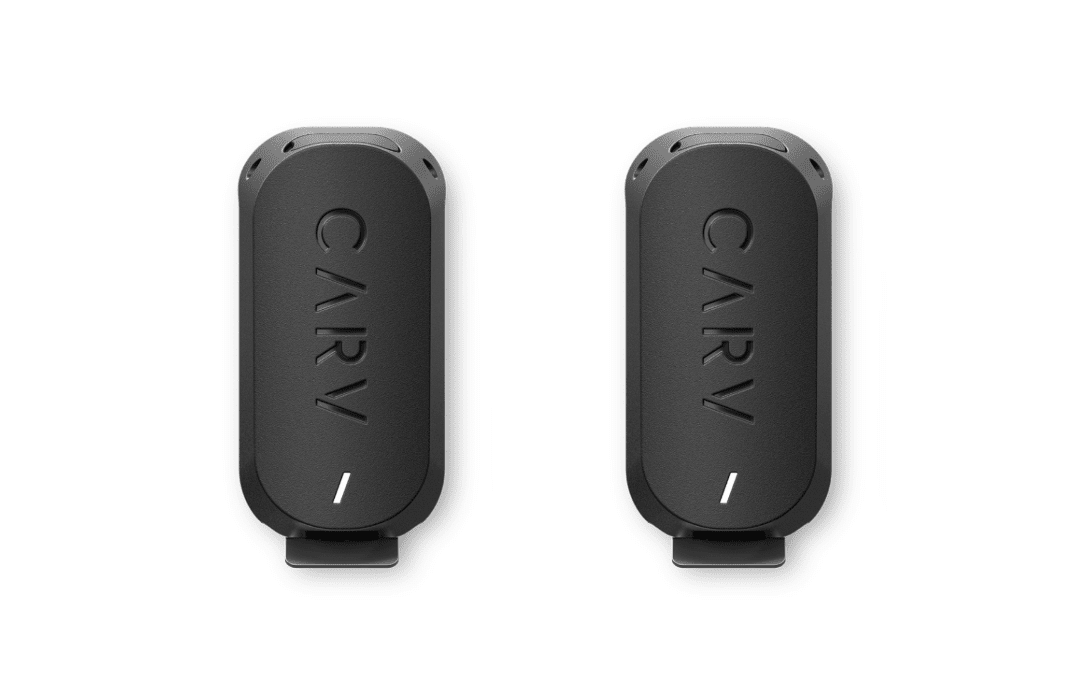
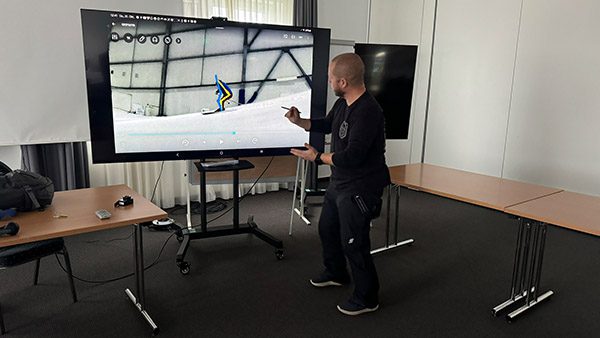
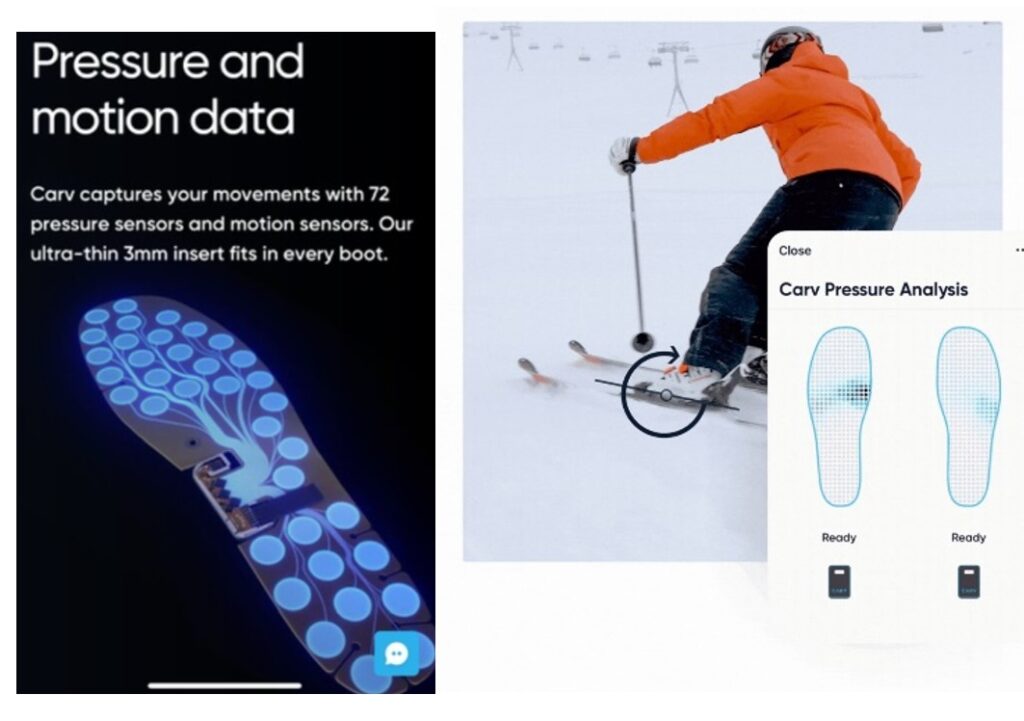
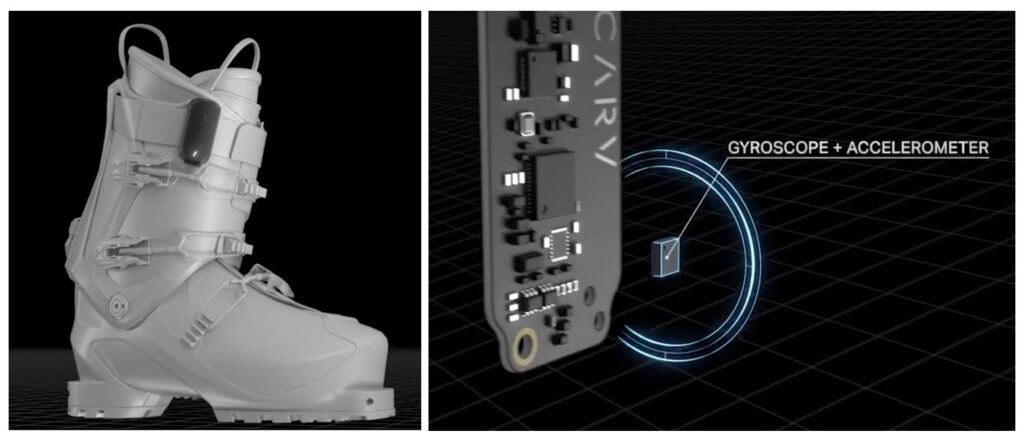

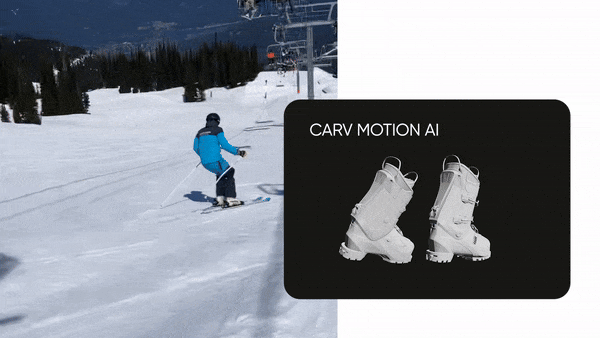

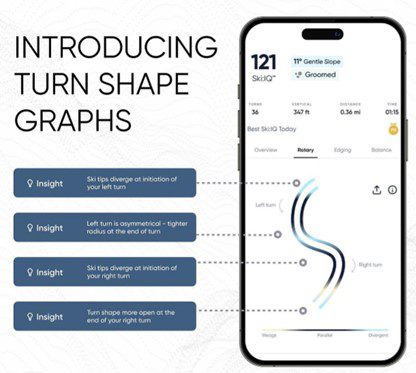

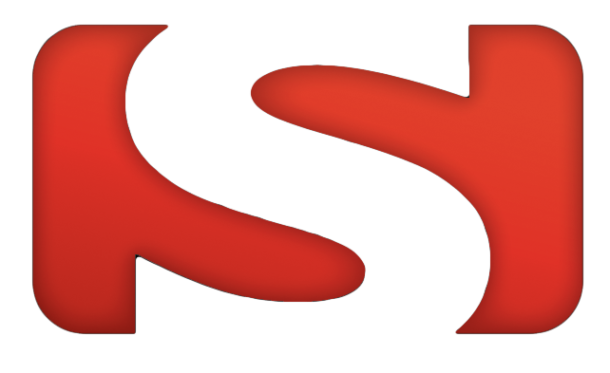
Great and detailed review!
Thanks for the work and time you have invested.
I have used a similar tool with my archery students, called Mantis x8. It can show you some faults but not how to improve. Therefore you need a coach.
Let’s talk about in January, at camp #2.
All the best
Elmar
Hi Elmar, looking forward to having a chat about it on the chairlift soon! 🙂
Great review and explanation. Thank you.
Guten Tag !! Wie geht’s? Very enlightening evaluation of CARV. I have used CARV 1 for 3 yrs., and have enjoyed some metrics. I am not as “hung up” on Ski IQ as many on the CARV Community Facebook site, Many are concerned about the loss of the Outside Ski Pressure metric. But, You seem to have an opposite view. Frankly, some of the “tips” that are given ie: ” pretend You have a bowling ball on Your ski tips, etc., etc. “, are not relatable. Being 82 yrs. old, I didn’t invest in CARV 2 Units.
I have perused, and devoured Your videos since I got them a few years ago. I just re-watched Blue-Black; Blue-Powder, & Tanka’s for a ski trip to Big Sky, MT. They are The Best. I get a lot out of them, and can often diagnose My problem.
Vielen Dank. John Murphy
Dear John, I have just replied to your comment in the member area. Thank you for your feedback! 🙂 It is an interesting tool but they will need to make some better decisions to get it from the extreme carver niche to something that is useful to a wider group of people. Right now i don’t think it does that very well. Many of my clients that skied with it lost interest quite quickly as they did not see their skiing reflected in the data enough. Liebe Grüße! Klaus
First tests: https://sofaski.com/carv-2-first-tests/ and on Instagram:
https://www.instagram.com/p/DDbaeL_ig7-/
This is a great review of the product. Many of the online reviews are paid for by Carv so it is refreshing to see one of the few reviews that actually delves into the key issues with honesty. I used Carv for four years and very much enjoyed the first few years – although I was oblivious to the detail of how scores were calculated or the lack of accuracy in the hardware at that time.
I upgraded to Carv2 and Nevado and have personally been very disappointed with it. This season I’ve logged 156 days with Carv and over 107,000 turns – my season includes the US and Australia. I have become very frustrated with the new system to the point that I have now cancelled my subscription. I don’t believe in their new AI system at all – there were so many odd things happening with it. My overall score dropped 15 points and in 156 days of using Carv this season I made no progress despite attempting to increase the ‘key metrics’ that carve would focus on. As you have said Carv gives you outcomes, not fixes.
I was scoring high 150s doing tiny ankle rolls on cat tracks but 130s doing full blooded carves on proper terrain. I strapped on a snowboard and scored exactly the same score on a run with the snowboard as I did on skis. Tell me how that is possible if it’s accurately measuring the metrics? My daughter hit the park with her Carv and scored in the 140s for a 360 and a switch 540. Shouldn’t be possible. Carv support didn’t want to know, wouldn’t even look at our data.
I think it has its place at a certain level of skiing but unless you happen to ski exactly how the Carv team of reviewers want you to ski you will be frustrated. And without more clarity on how the Ski IQ is being calculated I don’t think it can take me any further. I like what they tried to do but at the end of a day a good instructor is still way more useful.
Hi Jon,
Thanks for sharing your experience with CARV. My further tests with CARV 2 were also quite disappointing. Although the main upgrade was supposed to provide relevant feedback across more areas of skiing, it became clear that it still struggles to do just that. From the ski techniques promoted to the things it can measure accurately, it still caters to a certain way of carving, which can be questioned in itself, and is far from being able to give meaningful advice to skiers who are interested in becoming better overall, all-mountain skiers.
Sooo, what you’re saying is . . . I’m still not sold . . . I started skiing late in life and brought with me a certain amount of fear mixed with not really having in-depth lessons — I owe all my learning to youtube–I then had a stroke (PFO) which while it hasn’t stopped me from skiing it has given me left-side weakness. I am just trying to keep at it and maybe improve what I hadn’t got right the first time and will there be benefits to investing in the current version of Carv? Thanks.